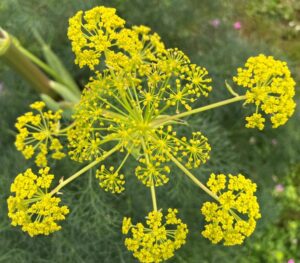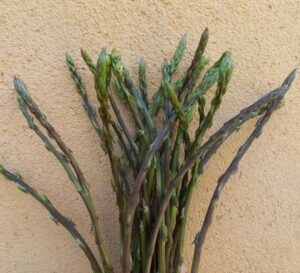Italy
Giant Fennel pith for transporting fire
While researching various bushcraft and survival topics, I constantly encounter inconsistencies and errors on reputable websites. Therefore, I have gotten into the habit of checking many postulates myself. One of these statements is that Prometheus brought fire to Earth with…
Giant Fennel stalks for lighting fire
Various internet pages and YouTube channels describe lighting fire with stalks of giant fennel (Ferula communis) as easy. I doubted these claims, so I tested them myself. The outcome was sobering, which I will describe in the following article. I…
Giant Fennel stalk wood as building material
Giant Fennel (Ferula communis) is a common weed in Mediterranean countries and Central Asia. Except for one genetic variety in Sardina, all green parts of the plant are strongly haemotoxic and lead to the poisoning of livestock and humans. This…
Wild asparagus in Sicily
Wild asparagus, a unique culinary delight, is prominent in Sicily’s springtime cuisine. The region boasts two distinct species: Asparagus albus, White asparagus, and Asparagus acutifolius, affectionately dubbed ‘Wild asparagus’ in English. Another edible part of these plants is its ‘crown’…
Stone huts at Mount Etna in Sicily
Stone huts on the northern side of Mount Etna in Sicily were built at least since pre-Hellenic times, around 4,000 BC. The building materials were basalt blocks from eroded lava at this location. The builders used dry-stone wall construction without…
Beachcombing for Vongole clams in Northern Italy
Vongole clams (Ruditapes philippinarum) are the main bivalve species collected from the flat beaches of the Adriatic Sea in Northern Italy. Introduced to aquaculture facilities in the lagoon of Venice in 1983, they are now considered an invasive species, having…
Using Honey Locust Pods as Food
The Honey locust tree, also known as the Thorny locust, derives its genus name (Gleditsia) from a former director of the Botanical Garden in Berlin. Its species name (G. triacanthos) means ‘Three thorns’, which refers to the typical arrangement of…







